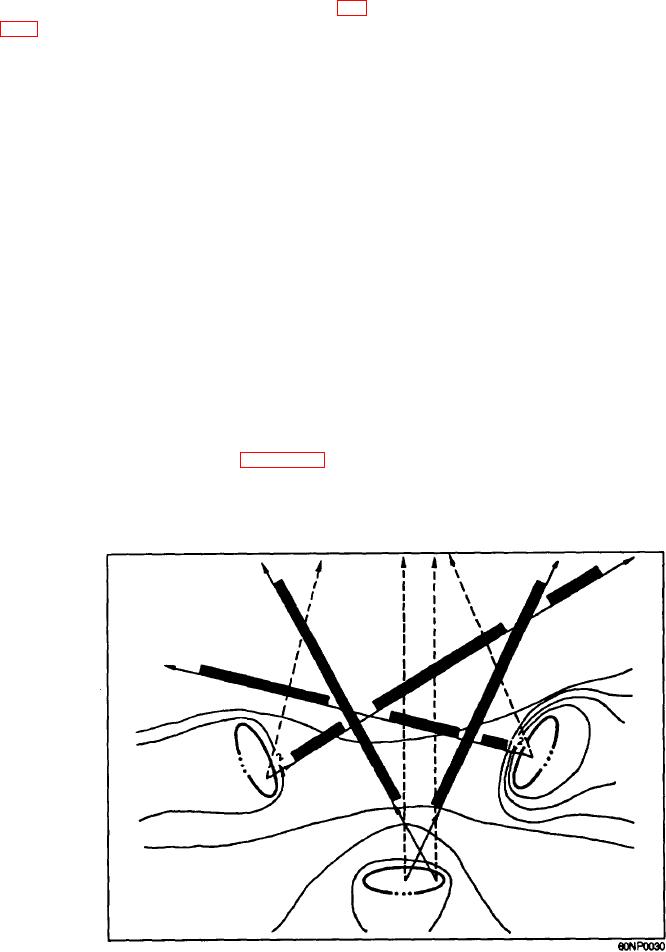
Machine Gun Sector of Fire
guns should be used as close to each other as the
machine gun fire plan will allow. This action ensures
A sector of fire is assigned to each machine gun
interlocking fire, ease of control, and supplies (fig.
squad. A machine gun sector of fire does not normally
exceed 800 roils (45 degrees). Adjacent machine gun
squad sectors should overlap. Preferably, the final
Machine Gun Final Protective Lines
protective line comprises the near boundary of the
sector. It maybe located within the sector when the
grazing fire is slightly more frontal than desirable and
Effective final protective fire is characterized by
machine gun fire coverage closer to the FEBA is
the following:
required.
1. Flanking: Maximum flanking fire is desirable.
Machine Gun Principal Direction of Fire
The more frontal the fire, the less effective the coverage
of the company front.
When the terrain does not allow for an effective
final protective line, machine guns on the FEBA may
2. Interlocking: Interlocking fire adds to the
be assigned principal directions of fire for covering
effectiveness of the fire plan. Such fire reduces the
dangerous avenues of approach. In such situations,
number of gaps in the final protective lines and provides
the principal direction of fire may fall within the sector
mutual support between adjacent units.
of fire or comprise either of its boundaries.
3. Grazing: Final protective lines are located to
NOTE: A machine gun cannot be assigned a final
obtain maximum grazing fire. Grazing fire is fire in
protective line (FPL) and a principal direction of fire
which the trajectory of the bullets does not rise above
(PDF).
the height of a man, standing. On flat or uniformly
sloping terrain, machine gun fire grazes to a maximum
Machine Gun Communications
range of 700 meters from the gun. Figure 4-16 shows
a proper technique for graphically displaying final
Whenever possible, the primary positions of the
protective fire and gaps in its grazing fire on an overlay
machine gun squad are provided with sound-powered
telephone communications on the company wire net
or sketch.
Figure 4-15.--Machine guns split.

